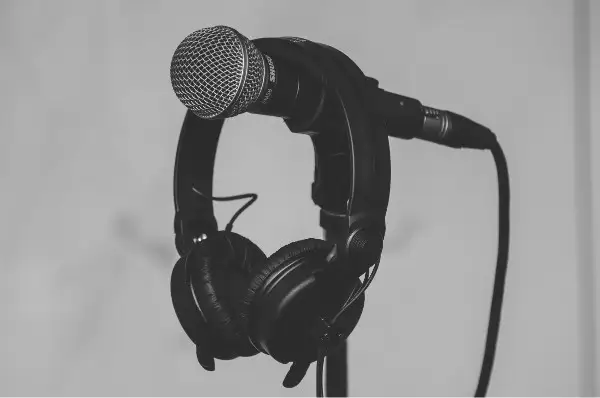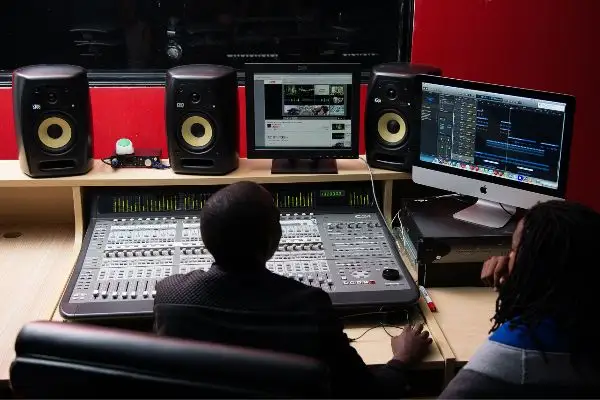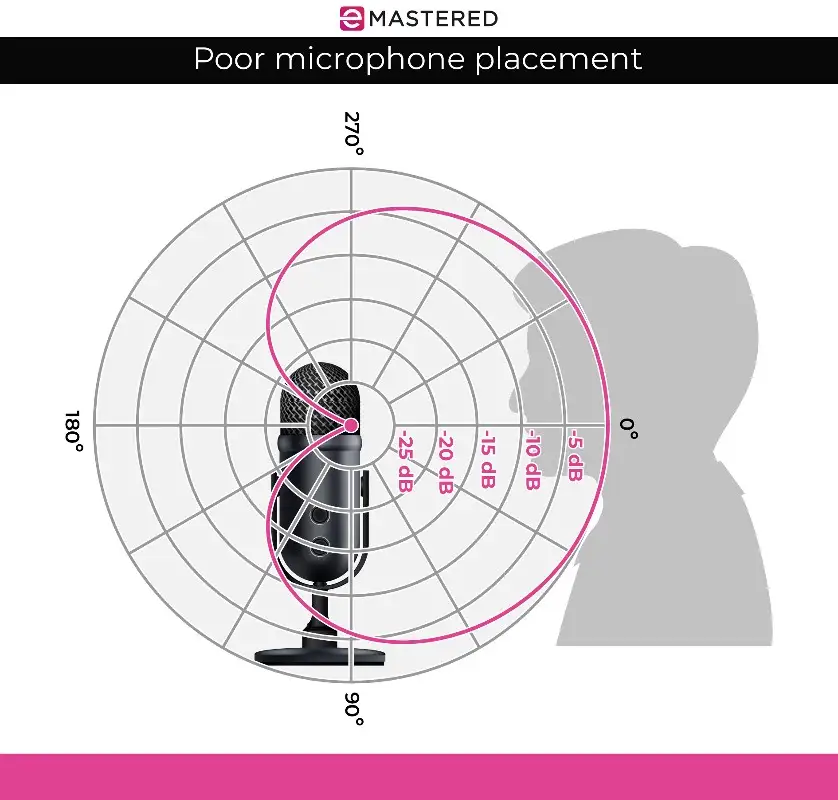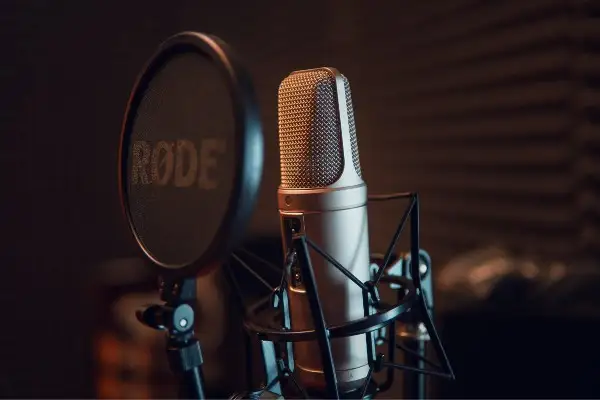We're in a golden age of audio. Vocalists, producers, and budding engineers alike are all able to track polished vocals from home with the right equipment, setup, and experience. However, a reduced barrier for entry often comes with a larger margin for error.
In other words, simple vocal recording mistakes are more common than ever. Fortunately, we've put together a list of vocal production no-nos every engineer should avoid throughout the tracking process. Use this checklist to ensure you're producing quality sound with every session.
13 Vocal Recording Mistakes To Avoid
Let's jump right in! Whether you're a freelance engineer, a passionate vocalist, or just someone who wants to record awesome vocals, take care to avoid these common mistakes:
1. Neglecting Sound Treatment
Not all of us have access to a professional vocal booth whenever we track vocals. However, it's incredibly important that we do everything in our power to soundproof our spaces. Even baby steps, like reducing the number of windows or room reflections can make a big difference.
2. Not Optimizing Playback

One common mistake is that beginner producers forget that their sound source is only as good as their playback device. It's essential that you use the right gear for the job. For instance, an unknowing producer who uses Bluetooth or headphones other than studio headphones can unwittingly distort or introduce latency in the mix.
Make sure your monitored signal is a clear reflection of your input and DAW signal. Paying key attention to what goes out is just as important as what goes in.
3. Glossing Over Delay or Latency Issues
Hear a slight delay in your monitored signal? Sensing phase issues when recording with multiple mics? Take a pause and adjust as needed. The extra time used to set up another session, adjust your vocal level or conserve CPU will undoubtedly prove its worth in the final product.
4. Not Adapting To The Needs of The Vocalist

One of the best parts about music is that it's not a one-size-fits-all approach. What one vocalist needs is entirely different from the needs of another. Something like the proximity effect demonstrates this perfectly - the closer you are to the microphone, the more low-end frequencies you'll catch.
Distance from the microphone alone can shift the entire character of a recording. It may be time-consuming, but avoid recording in a rigid way. Expect that every session needs to come with its own intentionality.
5. Not Leading As A Session Coach
Recording music is not just about producing a strong lead vocal or vocal tone. To capture an amazing vocal performance, you need to walk your vocalists through the art of recording sound. Sometimes this means being a cheerleader for a self conscious singer. Other times this means providing kind, constructive criticism to reap the best possible results. Remember that being a successful engineer comes with building a welcoming environment for creatives.
6. Poor Microphone Placement
You recording setup will shift throughout the session. Tracking acoustic guitar, drums, bass, and of course, vocals are all going to require different approaches and therefore, individualized mic placement. Ideally, your microphone should be about five to twelve inches from the vocalist's mouth, with the microphone's diaphragm in alignment.

7. Forgetting About Sibilance
Speaking of microphones, make sure you're catching those unruly "p"s, "t"s, and "s"s that are clouding your vocal session. You can use a pop filter to help catch unwanted sounds before it hits your DAW, and take care to include dressing as a key part of your vocal production process.
8. Using A "One and Done" Mentality
Maybe you just got the one take you're 99% sure is going to be used as the main lead vocal in your mix. Record another. And another. For safety purposes, you should always record more than you need. This may seem unnecessary in the moment, but nothing's more time-consuming than having to repeat the recording process from start to finish.
9. Not Saving Multiple Sessions
Whenever you're creating a new session or make significant changes to your mix, save it as a separate file. Doing so will make it easy for you to revisit past iterations when your vocalist realizes an older section sounds stronger than the newer one.
10. Too Much or Too Little Attention To Detail With Timing
One of the most important parts of vocal production is comping a vocal performance. During this process, you should ensure that all vocals are in time, synchronized, and automated so that you can maintain dynamics without coming across as unpolished.
This should be done with nuance and care, since too much comping can create an unnatural, unpleasant sound.
11. Not Being Intentional About Creative Decisions
Not sure why you're adding a compressor to your vocal chain? Can't nail down why your acoustic guitars don't sound as good as the backing tracks in a mix? It's time to go back to the drawing board.
Each of your creative decisions should have reasoning behind it. Otherwise, you're just clouding your mix and taking up valuable frequency real estate.
12. Using The Wrong Microphone
Seasoned engineers know when to use a dynamic mic instead of condenser microphones and vice versa. For instance, tracks with harsher vocals like rock and rap may get better sound quality with a dynamic mic, while pop vocals might sound best from a condenser microphone.
In any case, know your equipment. You should know your mic's bass response and durability before your vocalist walks into the session.
Check out this video for reference:
13. Over-processing
We all need to establish a noise floor, use compression, and alter a vocal's frequency response to get the polished sound we crave. However, too much processing can make the vocal sound unnatural. Remember that great recordings strike a balance between polished and raw.
Too much compression can make a lead vocal flat. Too much reverb can drown out the energy of a track. Process your vocals just enough to polish your sound, but when in doubt, leave it out.

Recording Vocals At Home FAQ
Recording vocals at home effectively can take time, patience, and practice. Use these commonly asked questions and answers to help expand your understanding as an engineer:
Why do I sound worse singing on recording?
Raw singing doesn't have the usual pitch correction, frequency shaping, and compression that comes with a properly processed vocal.
Should you record vocals dry?
Unless you're looking to produce fully live lead vocals, it's best to record vocals as dry as possible so that you have the most possibilities during the vocal production process.
What is needed to record vocals at home?
Recording vocals at home isn't as difficult as it may seem. You'll need a professional microphone, an audio interface, a digital audio workstation, and preferably, a sound-treated space to start tracking.
How do I make my vocals sound professional?
Creating professional vocals starts with intentional acoustic treatment, using the right microphone during the tracking stage, and intentional vocal production in post-processing.
Making vocal recording mistakes is practically a rite of passage for any musician. Hopefully, this guide makes it easier for you to track your own voice and others. Happy tracking!





